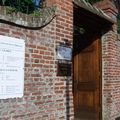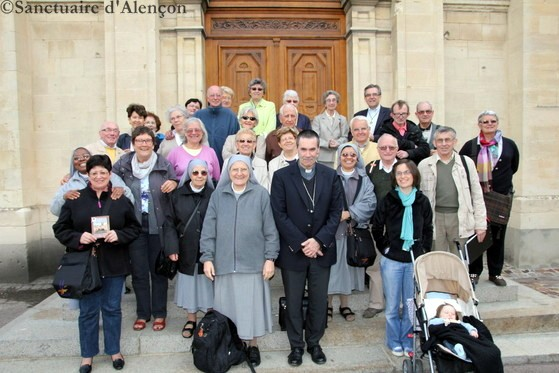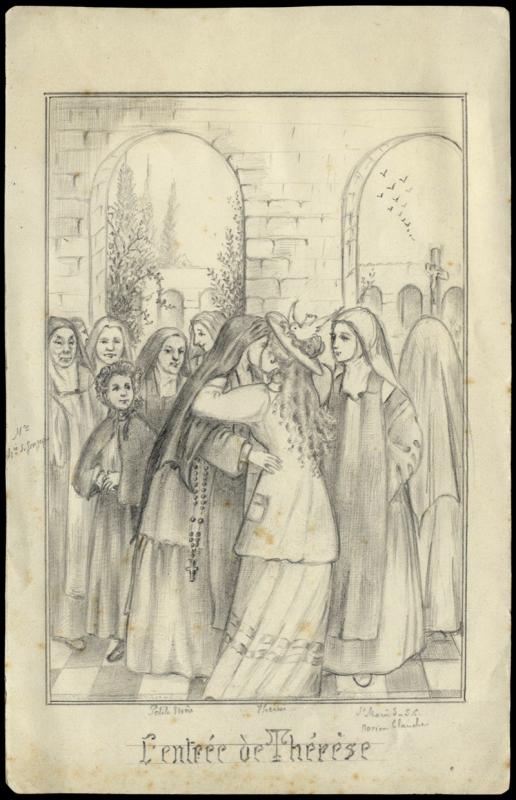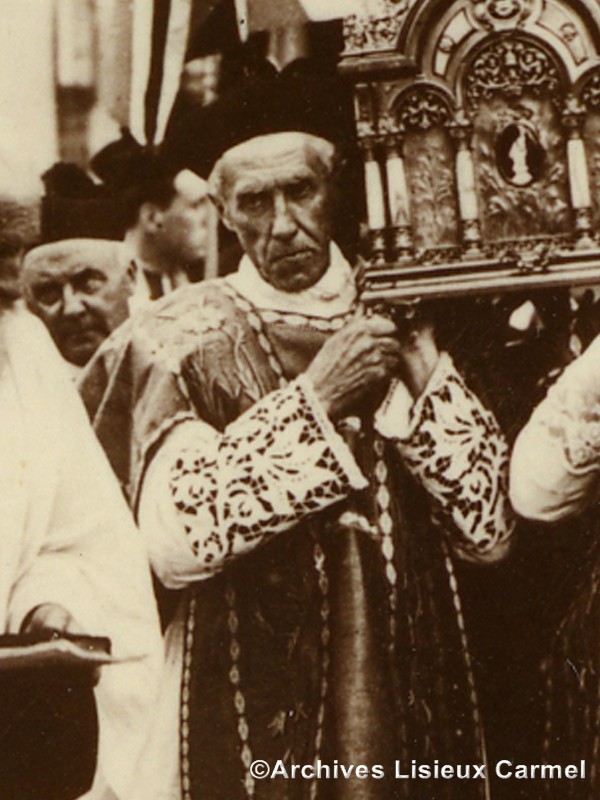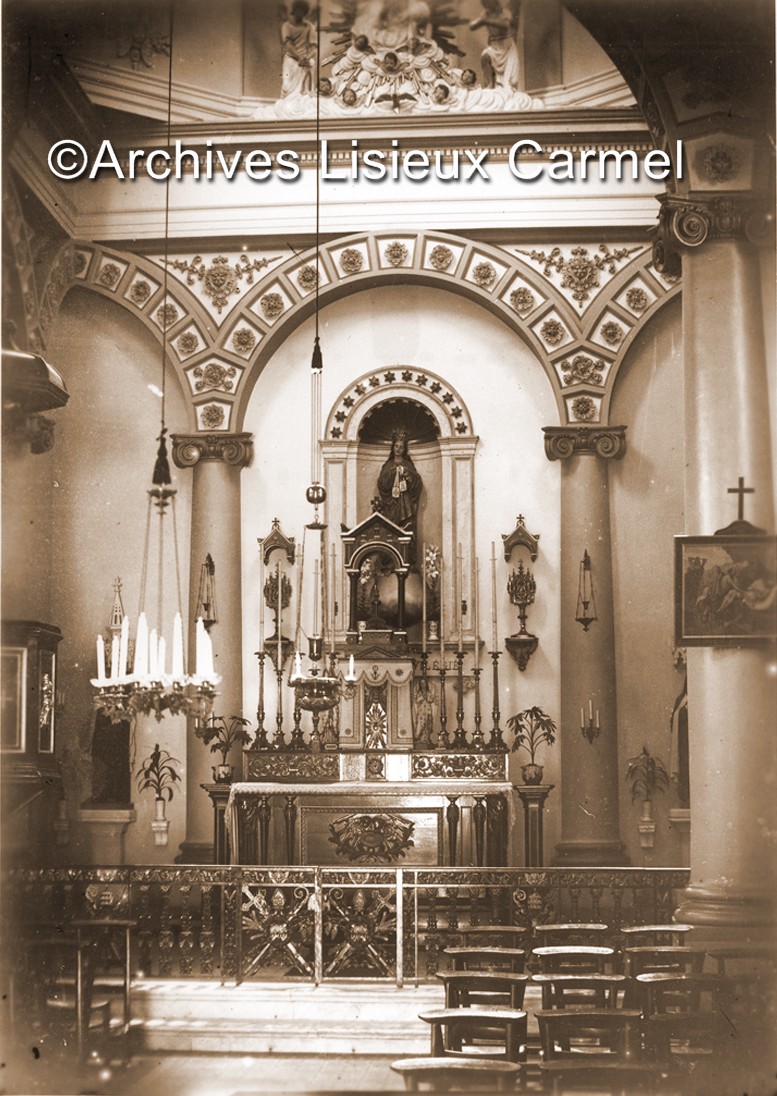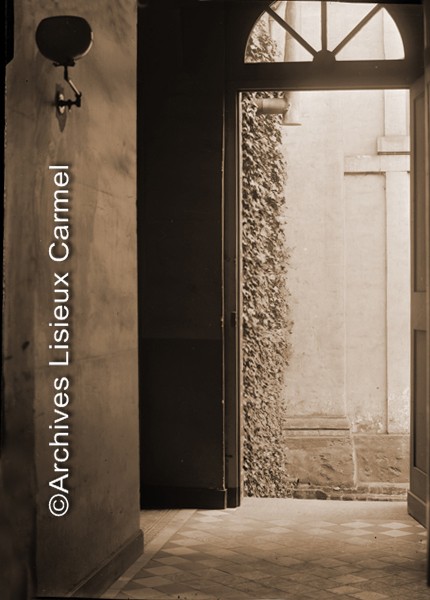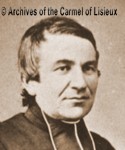Louis was then sixty-four years old. This photograph had been taken about three years before. In the months of May and June 1888 he had made several business trips to Paris, where he invested (and lost) 50,000 francs on the Panama Canal.
Louis had recently experienced many losses. A widower, he had given his second daughter, Pauline, to God as a Carmelite nun in 1882. In 1886 his oldest daughter, Marie, followed Pauline. On Monday, April 9, 1888, Louis escorted his youngest, Therese, his "little Queen," to the Carmel. Six weeks later, on Tuesday, May 22, Marie made her vows. The next day, on Wednesday, May 23, Louis assisted in the public ceremony at the Carmel chapel in which Marie received the black veil of the professed Carmelite choir nun. Father Almire Pichon, the Jesuit "spiritual director of the Martin family," preached the sermon.
At this time, despite his losses, Louis was experiencing consolation in prayer. Therese speaks of his eyes being flooded with tears after he received communion. Referring to an incident in May 1888, a passage inserted into Story of a Soul by Pauline reads:
"O Mother, do you remember the day and the visit when he said to us "Children, I returned from Alencon where I received in Notre-Dame Church such great graces, such consolations that I made this prayer: My God, it is too much! yes, I am too happy. it isn't possible to go to heaven this way! I want to suffer something for you! I offer myself . . . . the word 'victim' died on his lips; he didn't dare pronounce it before us, but we had understood."1
Sometime in 1888 Louis sent this note to his Carmelite daughters:
I want to tell you, my dear children, that I have urgent desire to thank God and to make you thank God because I feel that our family, although very humble, has the honor of being among the privileged of our adorable Creator.2
This privilege did not come cheap. On Friday, June 15, Celine told her father that she also had a vocation to Carmel. She writes:
"June 15. I announced to Papa my vocation for Carmel, and these were the circumstances. I was showing my dear father a painting I had just completed; he was in the belvedere, seated at his little work table, and he seemed to be meditating. He turned to me, and he studied my canvas with joy and suggested that he take me to Paris to have me pursue a course in painting. I immediately answered that I would prefer to give up this art completely rather than expose my soul to any danger, that, having given my heart to Jesus a long time ago, I wanted to keep it pure . . . ." (Sister Genevieve, CMG IV, pp. 183-184).3
Louis readily gave his consent. "You can all leave. I will be happy to give you to God before I die. In my old age, a cell will be enough for me."4 In fact, Celine planned to become a Carmelite only after the death of her father. Deeply moved, Louis pressed Celine to his heart and said, "Come, let us go together to the Blessed Sacrament to thank the Lord for the graces He has bestowed on our family and for the honor He gave me of choosing His spouses in my home. Yes, if I possessed anything better, I would hasten to offer it to Him."5
We leave his family searching for him and the Carmelites praying for his safety. Please return for the rest of this little adventure, which ends on June 26.
1Story of a Soul, tr. John Clarke, O.C.D. Washington, D.C.: ICS Publications, 2005, p. 237.
2A Call to a Deeper Love: The Family Correspondence of the Parents of Saint Therese of the Child Jesus, 1863-1885. Tr. Ann Connors Hess, ed. Dr. Frances Renda. Staten Island, N.Y.: Society of St. Paul, 2011, p. 365.
3Letters of Saint Therese of Lisieux, Volume I (1877-1890), tr. John Clarke, O.C.D. Washington, D.C.: ICS Publications, 1982, p. 435 (LT 53, footnote 3).
4Celine, soeur et temoin de Sainte Therese de l'Enfant Jesus, by Stephane-Joseph Piat. Office Central de Lisieux, 1964, p. 37 (my translation).
4Story of a Soul, op. cit., p. 239.









